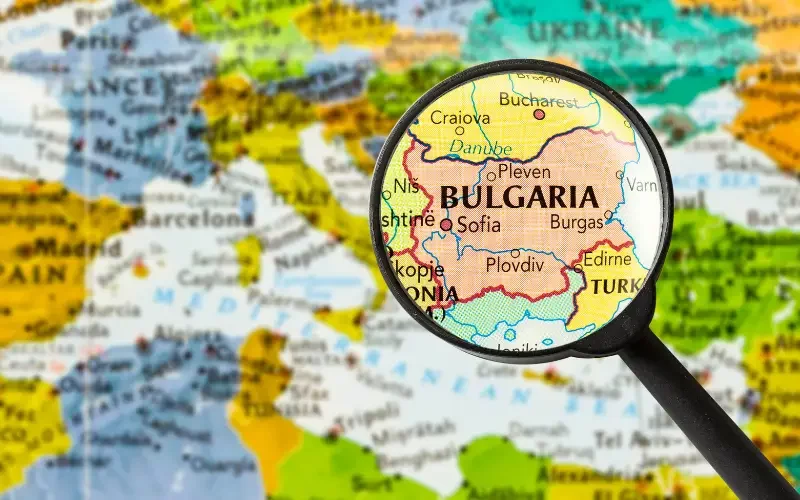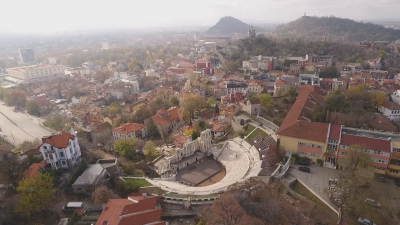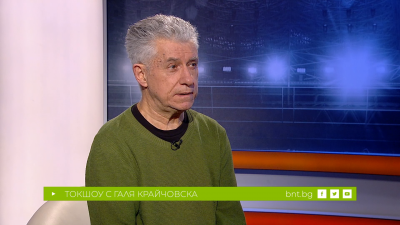The standard of living in Bulgaria: Richest in Sofia, poorest in Vidin region

The capital remains the richest, although Sofia's share in the national total declined by two percent. This is according to the latest survey of the Institute for Market Economics (IME). Sofia contributed 41% or BGN 68.7 billion to GDP in 2022. Plovdiv ranks second with 6.5% or BGN 13.7 billion. Stara Zagora's economy, boosted by a strong energy sector, reaches 6.2%.
Vidin district remains the only district economy with a volume below 1 billion BGN. Sofia is also the leader in the ranking for the average value of gross domestic product per capita. For the capital city it is over BGN 50,000 per capita, in 6 other districts - over BGN 20,000. What does this data mean?
Growth rates in the country's regions are uneven. The leading regions are becoming more and more economically developed, while the lagging regions are growing more slowly. The reason is that strong regions have a high share of value-added services and developed industry. It is worrying that the scissors in the standard of living is opening wider between rich and poor districts, the IME said.
Zornitsa Slavova, Senior Economist at the Institute for Market Economics: "We see growth in almost all areas, but the differences between them are also increasing. Apart from the North-West, we now see some districts in the North-East of Bulgaria - Targovishte, Razgrad - as underdeveloped, and there are deeper, poorly connected infrastructure and lower educated population, lower economic and investment activity. We can see that investment is generally concentrated in the capital, Sofia - a district in the southern part of the country along the Thrace River, from Sofia through Plovdiv, Stara Zagora to Burgas and Varna - traditionally a strong economic centre. We see differences in education, investment, infrastructure and population. In many places the population is ageing and even if there is an economic upturn the workforce is in short supply."
Despite its proximity to Sofia, Kyustendil is one of the slowest growing districts in the country. It is characterised by a rapidly ageing population and a lower number of people of working age.
Despite its proximity to Sofia, Kyustendil district is one of the slowest developing districts in the country. It is characterised by a rapidly ageing population and a lower number of people of working age.
Sasho Simeonov is a pensioner from Bobov Dol. He receives an average pension and works to supplement his budget.
Sasho Simeonov, working pensioner: "Most of those who are from Blagoevgrad, Dupnitsa, Kyustendil, Pernik, travel to Sofia. Everything is concentrated in Sofia".
The average gross salary in the district is about 1500 BGN. Luisa Chilingirova works in a commercial company in Dupnitsa and receives a lower than average salary.
"This amount is not enough for the standard of living and the prices in the shops, but our area is such that most people have to with this amount".
"Almost everyone here is on minimum wage".
She says there aren't many job opportunities in the town. Her husband mainly takes care of the family budget. The development of the area depends on the bilateral relations between Bulgaria and North Macedonia.
Adrian Nikolov, senior economist at the Institute for Market Economics: "Their chance of being able to attract investments, attract young people is getting smaller with this wider opening of the scissors, because the choice between Sofia and all the big cities will become clearer in the near future."
"In recent years it has been one of the slowest growing areas economically, secondly the population is ageing much faster, the working age population is quite a small number and the educational structure is not favourable. We saw an energy bonanza to the local economy in 2022, but most likely with the shrinking dynamics of the energy markets in 2023-24 we will see another slowdown in the development of the area. The relations between North Macedonia are very interesting there, as we are talking about corridor 8, the construction of railways, roads to connect North Macedonia with Bulgaria and this is a serious potential for economic growth in the region, as long as there is serious political will, international politics, the EU have already intervened there, but also the proximity to Sofia, as Kyustendil thanks to better infrastructure is becoming more and more a “bedroom” for workers, for people who work in Sofia and nearby regions."
The districts falling within the South West planning region are also disadvantaged by being grouped with the capital. As an example, the IME points to the limitation of the possibilities for cohesion co-financing.
Adrian Nikolov, senior economist at the Institute for Market Economics: "Sofia is already a very developed region, with a large local budget, not to mention that some of the major infrastructure projects such as the metro have been completed and in this sense directing more funds to the small regions, to the lagging ones is in the national interest."
Two regions do not meet the requirements for at least 800,000 people and a third is also trending to stop meeting them, the IME signals. And they recommend a new regionalisation that would contribute to a fair distribution of cohesion funds and faster economic development.
Get the latest news wherever you are!
Follow us on
Facebook
and
Instagram
Follow BNT’s YouTube channel
You can now also watch us on
TikTok
Find us on
Google News























